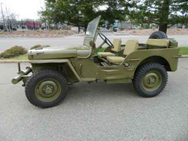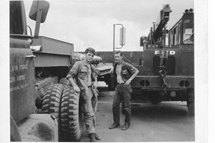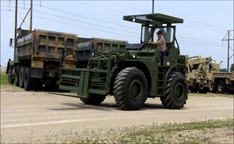
|
| Title: Chapter 12 What are Your Driving Experiences? | |
| wakaibobz > GENERAL > StoryWorth | Go to subcategory: |
| Author | Content |
|
wakaibob
|
|
|
Date Posted:07/10/2021 11:04 AMCopy HTML Chapter 12: What Are Your Driving Experiences? I got my driver’s license by driving my dad’s ’58 Ford Fairlane. We could get a “learner’s permit” at the age of 15 years and six months old. We could practice driving with the permit as long as a licensed driver was in the car with us. My dad, brother and cousin helped me practice driving. I also took a driver’s-ed class after school. As soon as I turned 16, I took my driver’s license tests. When I handed in my written test, the instructor said I missed one question too many. He gave me a study guide, told me to correct my mistakes and bring the test paper back to him. I did as he said, but when I went to hand it in, there was a different person there. He asked me why I had the study guide and I told what the other person said. He just shook his head and stamped the test paper “passed.” Next, I had to take the driving test. I was very nervous. I drove my father’s car and the instructor was in the passenger seat. Every now and then, he would write something on his paper. When we finished, he said, “I’m sorry Mr. Young, but you passed the test. You need to practice more!” I learned how to drive a manual shift car, a.k.a. stick shift a.k.a. stick, when I worked as a dish washer at the CYO Camp Don Bosco. We had a WWII Jeep that we used on the campgrounds. It was a little hard the first few times starting from first gear. I ground the gears a few times going from first to second gear. I got the hang of it rather quickly. Knowing how to drive a stick shift came in handy when I went to Viet Nam. Phu Cat Air Base was my first permanent base after graduating from basic training at Lackland AFB in Texas and graduating from Munitions School at Lowry AFB in Denver, Colorado. One of the first things we had to do upon arriving at Phu Cat was to get a driver’s license. We were supposed to be trained on each type of vehicle that we would drive. The driver license was thick paper and on the back was space for six types of vehicles. I ended up have three driver’s licenses stapled together. To give you an example of our “training,” we were told to back a 40-foot trailer between two 50-gallon drum cans. The cans were placed about 20 feet apart from each other. A blind person could pass that test. We were just old that we would get enough practice while working. I got much experience driving tractors with 25/40-foot trailers after I got stationed at Bien Hoa Air Base in Vietnam. I was first assigned to Line Delivery. We would deliver bombs etc. from the Munitions Storage Area, a.k.a. Bomb Dump, to the fighter aircraft on the flight line. We would drive back and forth for about 12 hours a day. Monte L. Mose was my trainer. He was a year younger than me, but he had a year of experience driving tractors and trailers for one year in Thailand. He taught me how to change gears in the stick shift tractor without using a clutch. You just listen to the engine. When you hear a certain sound, put the gear into neutral then rev the engine again and at a certain rpm change the gear up or down. I still remember the first time that I had to drive a Rough Terrain 10,000 lb. forklift. It was designed to use off-road. It had many functions. If you are driving on a slope, you can tilt the body, so you are sitting level, but the wheels are at an angle. The forklift tines can slide left and right, so it is easy to stack pallets. You can go into “crab” mode. When you turn right, the front wheels turn right, and the rear wheels turn left. This is good for making a turn in a tight space. The first time that I drove an Rt, I was told to drive it to the motor pool on the main base. It was about a three-mile drive. They knew that I had never driven an RT before, so somebody put it in crab mode. I couldn’t figure out how to get it out of crab, so I looked like a drunk driving down the road. When I got to the motor pool, I had to remove the tires to replace them with new ones. The tires were about as tall as me. The mechanics showed me how to do one tire and I had to replace the other three by myself. I thought that replacing a car tire was hard, but this was ridiculous. Another time, I was told to wash an RT. They would quickly get dirty with spilled diesel fuel, oil, grease and mud. Most of the guys would just spray water on it and clean off the mud. I used degreaser soap and spent much time cleaning it. It looked like a brand-new vehicle. Our boss told everybody to clean vehicles as good as I did. A few of the guys were upset with me for setting such high standards. When I was single, I would drive to Seattle from either Mountain Home, Idaho and Las Vegas, Nevada. The Vegas to Seattle trip is about 18 hours driving time. On one trip, I left Vegas in the afternoon and hoped to get to Seattle the following evening. I was driving on an upslope to go over a small mountain. There was no snow or ice on the road, and I was driving between 80 and 100 miles per hour. There was a curve on the road, and it went over a bridge. I didn’t think much about it, but halfway through the curve, my car started sliding sideways. I had to think very quickly. If I hit the brakes, I would go into a spin. If I turned my steering wheel too much or too quickly, I would go into a spin. I realized that I had to turn into the slide and very gently touch the brakes. Luckily, I was going uphill, and the car slowly straightened out and I came to a stop. This is when I learned that even though the roads might not be icy, bridges can be covered with black ice. The road was hot during the day, but after the sun set moisture would gather on the road. The cold air above and below the bridge would quickly freeze the moisture. Below are photos of a Jeep similar to the one I drove at summer camp, a tractor and trailer with a load of bombs with an H11 crane next to it and an RT forklift similar to the ones I drove.
|








